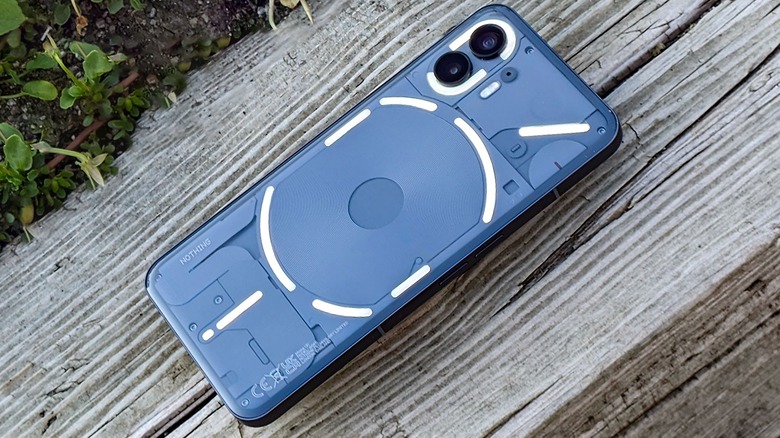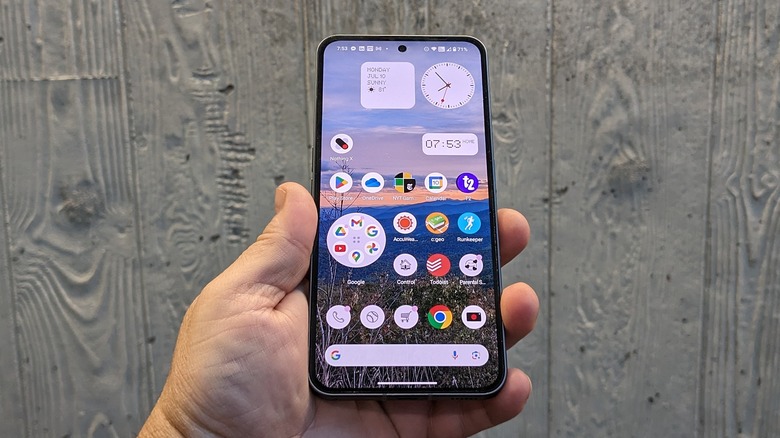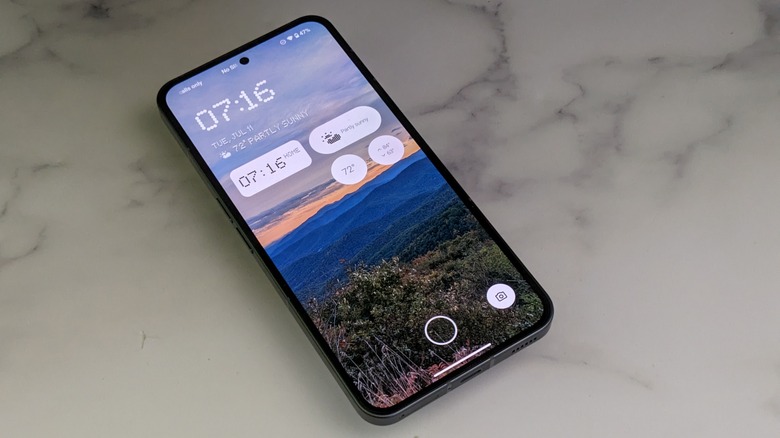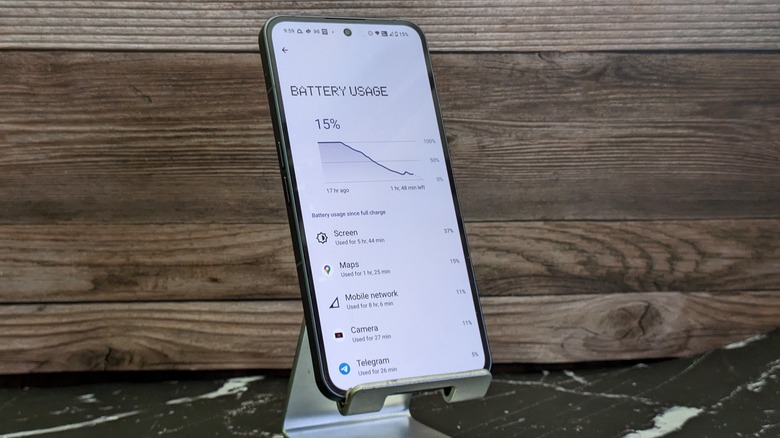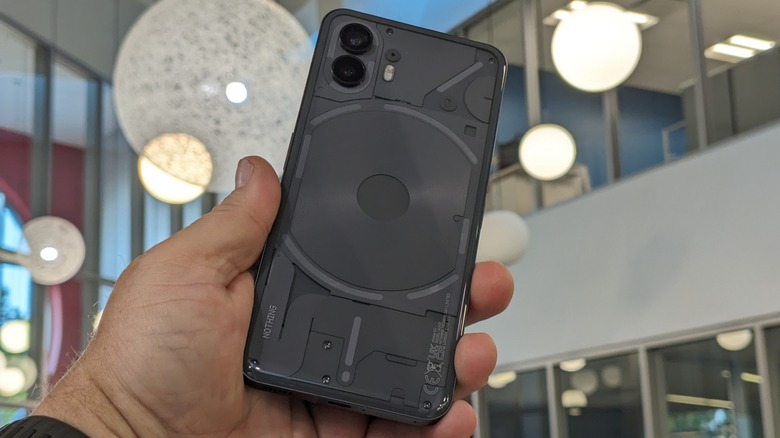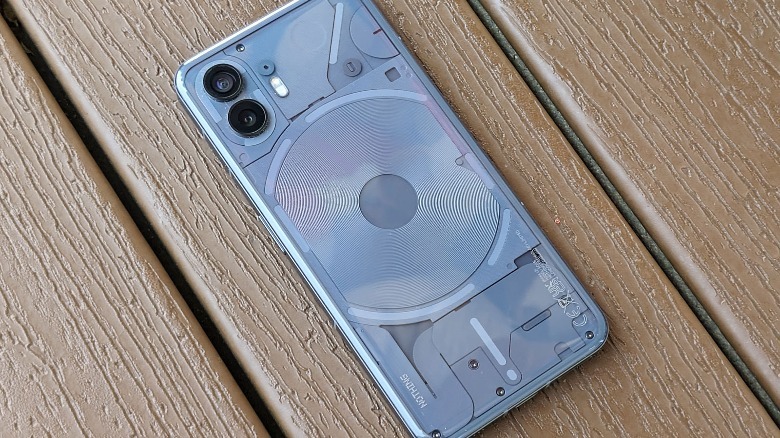Nothing Phone (2) Review: Easy Evolution
- Improvements everywhere
- Good, solid cameras
- Awesome software
- Fun design
- Some weird software choices
- Double the price of its predecessor
We may receive a commission on purchases made from links.
"We won a game yesterday, and if we win one today, that's 'two and a row.' We win tomorrow, that's called a winning streak." That quote from "Major League II" accurately describes where Nothing is right now. Nothing is two-thirds on its way to a winning streak. When we last checked in with Nothing, its debut phone, the Nothing Phone (1) had just enough pazazz to keep reviewers interested despite a decidedly midrange profile.
This year, Nothing upped the ante with the Nothing Phone (2) which has much more established flagship chops than its predecessor accompanied by some delightful software and a pretty good camera, all for a competitive price point that is pretty compelling except for one or two competitors. To continue the baseball metaphor from before, this phone isn't a home run, but it's a solid double in the gap.
So far, we have learned a bit about the camera, and we've delved into the design and software, so now it's time to cover what's left. This review was conducted over a period of two weeks using a review sample provided by Nothing.
Hardware improvements everywhere
The Nothing Phone (2) is a definitive step up in terms of hardware. Almost everything has been upgraded from the previous generation all the way down to the cameras, which use the same hardware as the Nothing Phone (1) but get a better, 18-bit ISP. The processor, storage, RAM, battery, and glyph interface on the back are all better than last year.
Speaking of the back of the phone, arguably the most remarkable thing about the interface on the back is the absolute lack of dust trapped inside the phone. Anyone that has ever tried to put a screen protector on the phone knows how hard it is to do so without getting a single hair or piece of grit stuck underneath. Obviously, Nothing wouldn't have gone this direction if its engineers hadn't figured out how to avoid dirt, but it's still remarkable all the same.
One hardware carryover from last year is the placement of the buttons on the phone. Namely, the power and volume-down buttons are directly across from each other, resulting in an extra dozen or so screenshots during the review period. You may find yourself frustrated trying to turn the phone on or off and instead hearing the tell-tale click of a screenshot being captured. It definitely takes some getting used to. But aside from that the hardware is a solid win.
Software is great, but with odd choices
The Nothing 2.0 launcher makes it evident that Nothing put a lot of thought into how you might want to use your phone and prioritizes aesthetics which is rarely a bad thing. Nothing's dot-matrix style print is everywhere in the phone which makes it feel like a lot of parts making up a better whole. Our hands-on piece covers a lot of what we had to say about the software, but one thing we didn't cover was the lock screen.
Specifically, this year, Nothing brought lock screen widgets to the phone, which is a nice idea, but Nothing overlooked one detail. Nothing's lock screen by default shows the time, date, and weather at the top of the lock screen. From there, you can add several widgets to the screen, but those widgets might sound familiar. You can choose to display the time, some quick actions (like turning on the flashlight), and the weather. Except that two of those three are already covered in the default lock screen you're getting anyway, so it's an odd choice.
The widgets look nice, in Nothing's font which is great, but they're limited to showing information that would have been shown regardless. Perhaps more widgets will come in the future, but for now, they seem a bit misguided.
Battery and performance
As you might expect, the phone has great performance with its Snapdragon 8+ Gen 1 processor. It registered 1175/3531 single and multi-core scores on Geekbench which makes it an overall solid performer. The LPTO display refreshes at up to 120 Hz dynamically, so if you're reading a book, the refresh rate drops to one hertz and back up to 120 when you start to scroll.
Games like "Call of Duty: Mobile" and "Asphalt 9" perform flawlessly with no dropped frames or stutters. The phone also doesn't get too hot during extended gameplay with is a nice surprise. Considering the Snapdragon 8+ Gen 1 was last year's flagship processor this is well within expectations, and the processor holds up well.
As for battery life, unfortunately, it's just average. Most days you'll get to bedtime with 15-20 percent left in the tank, but if you leave Wi-Fi and work exclusively on mobile data, the phone will struggle to make it to dinner time without charging up. That's not necessarily a deal breaker, but it's also not great. Overall the battery life falls into "just okay" territory.
Camera, macro, and portraits
The real upgrade here is the camera, and the dual 50-megapixel wide and ultrawide lenses, and a 32-megapixel front-facing camera. We already showed you some photo samples earlier, and if you saw them, you may have been impressed. Daytime photos are really great, as you can expect on just about any smartphone camera these days. But there are some other surprises.
Namely, macro photography (above, left) is quite good. Getting in up close and personal with flowers and lego minifigs you can really capture not only really good detail but absolutely lovely bokeh in the background, which really isolates your subject quite nicely. Similarly, portrait mode is one of the better ones you'll find on a smartphone camera. Additionally, the glyph interface on the back can serve as a softer more filling light for nighttime macro shots which is lovely.
Video from both the front and rear cameras is very good and has great stabilization. You might find yourself getting inconsistent audio if you're walking and talking to the front-facing camera, but your results will almost certainly vary in that regard.
Motion capture (above) is also quite good, though for some reason burst mode on the camera is limited to just 20 shots, and has a noticeable lag when starting up. Those two factors combine to make it very difficult to get the shot you're going for. When you do, it can be quite sharp which is a pleasant surprise for those of you with small children who like to run and play.
Cameras at night
At night, the cameras take a step back, but not so large a step that you would call it "bad." Rather, at night, the camera is social media good. You can grab some snaps and post them on Instagram, but when you blow them up you start to notice a lot of grain. This is especially true at dusk when the sky is getting dark, but not quite there yet. There's also a healthy dose of oversharpening as well.
Moving subjects are possible to capture, but not in burst mode, whose shutter speed renders all shots unusable. Still, you'll have 50/50 results trying to shoot live subjects at night. Sometimes the photos will be fine, other times, not so much. If you have memories that you want to capture, shoot a lot, and sort them out later.
On the video side, stabilization remains good as long as there's a subject to focus on. Just shooting a walking path will get you a lot of judder and wholly unusable footage. Still, these cameras surpass what you'll normally find at this price point, save possibly the Pixel 7 and/or Pixel 7a. Given that night shots are a perpetual challenge to all ut the best cameras, the fact that you can shoot and share at all is a blessing and a marked improvement over the Nothing Phone (2)'s predecessor.
Pricing, availability, and final verdict
The Nothing Phone (2) is available now on Amazon. Pricing starts at $599 for the base model. That's a good price, but it doesn't compare favorably to the Pixel 7 and most especially the Pixel 7a. That being said, this phone is more fun to use than either of the other two phones. If you want a phone with a great camera, that's the only reason to choose a Pixel above this phone.
The combination of the glyph interface and the software makes this a solid choice above all others at this price point, except for the cameras. More than that, though, overall the Nothing Phone (2) is a great step forward in Nothing's evolution, but it was also an easy step. It doesn't take a genius to figure out that if you improve every specification over the previous generation you're going to come away with a better phone. Now comes the hard part — improving when the hardware is already quite good.
Nothing is a company that will live or die by its software choices from this point on, and that's a great position to be in. It holds its fate in its hands, which is the best place you can ask to be. Nothing has already shown that it can make good choices, but it's also demonstrated poor choices as well in its other products. But, like the Nothing Phone (1) Nothing has done enough here that you should start paying very close attention to this phone, and its next moves and we'll see if it can put together a bona fide winning streak.
